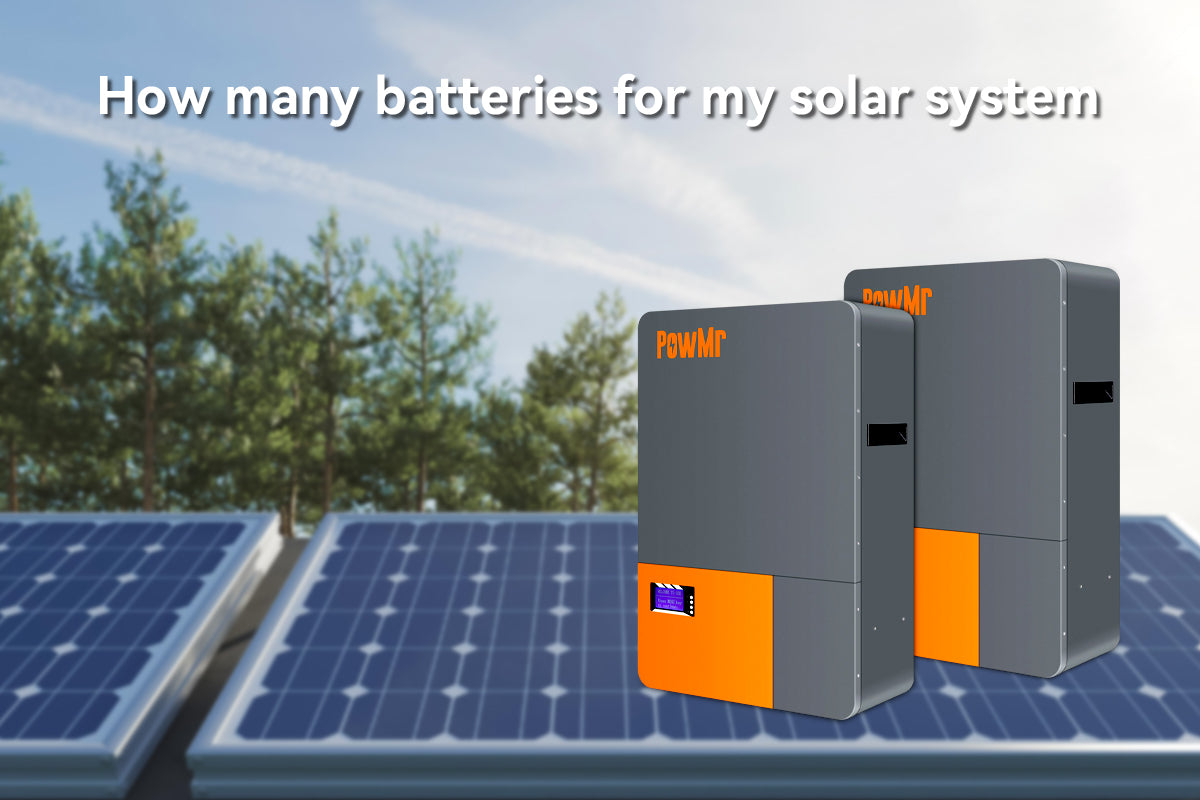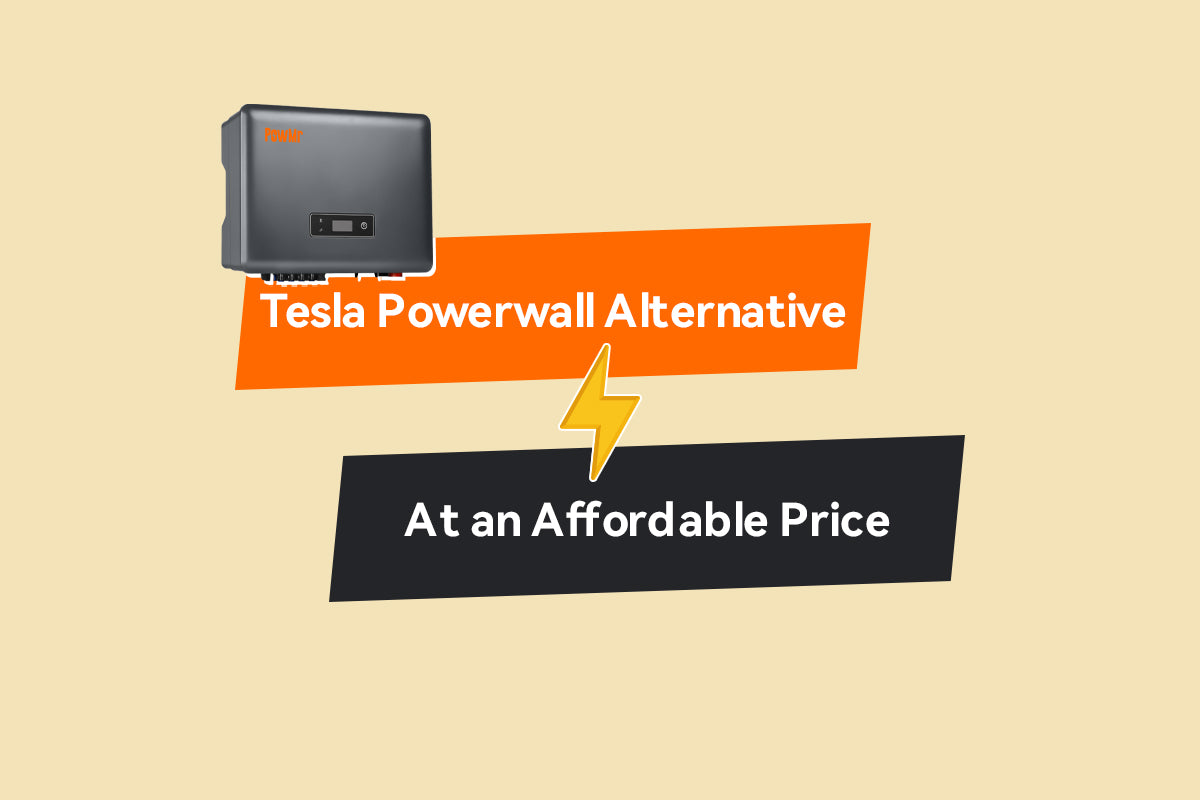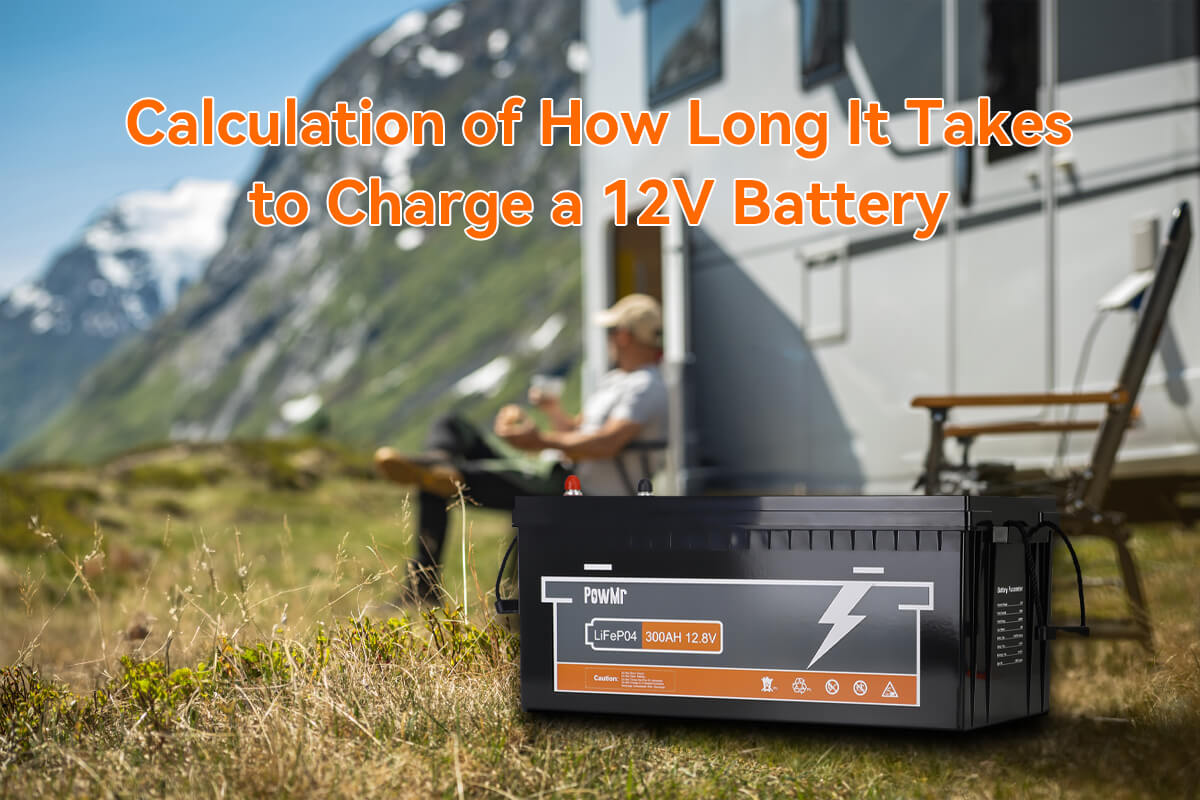Calculating the number of batteries required for your solar system is essential for energy storage. Solar panels generate electricity only during the day, and you need batteries to store it for use at night or during cloudy weather. It ensures system efficiency, sustainability, cost-effectiveness, and meets your energy needs.
But there isn't a straightforward answer to the question of "how many solar batteries do you need for solar" Read this article to learn about the factors that affect the number of batteries and how to calculate the number of batteries you need based on 4 different situations.
How many batteries needed for your solar system - 3 Factors
How many batteries needed for a solar system depends on several factors such as the size of the solar arrays, the daily energy consumption, the number of days of autonomy desired, and the type and capacity of the batteries themselves.
Battery types and capacity
The choice of battery type and capacity plays a crucial role in sizing a solar battery system. Different chemistries like lead-acid, lithium-ion, and flow batteries vary in performance, lifespan, and cost. Battery capacity, measured in Ah or kWh, determines the energy storage and discharge capabilities.
In this article, we will use 100Ah 51.2V LiFePO4 battery with a depth of discharge of 80% as a quantitative measure to calculate the number of batteries required. Then the amount of power stored in a 100Ah 51.2V LiFePO4 battery (at 80% DoD) is 5.12kWh and 4 kWh is available for load operation.
Understanding the different battery types and capacities is essential for designing an optimal solar battery system that meets energy needs and budget.
Size of your solar panel arrays
The size of a solar panel array directly affects the amount of electricity generated, which in turn impacts the number of batteries needed to store that energy.
When designing a solar power system, the battery quantity is typically determined based on the actual energy consumption needs, followed by the number of solar panels.
However, when adding batteries to an existing solar panel system, such as a grid-tied photovoltaic system, it's essential to first consider the power generation capacity of the solar arrays before deciding on the battery quantity.
After figuring out how many kwh the solar array produces, you can calculate the required number of batteries. Consider a typical scenario: a 1kW solar panel system generates 5kWh of energy daily under 5 hours of peak sunlight. A 100Ah 51.2V LiFePO4 battery, which stores 5.12kWh, would suffice to store the daily output, meaning only one battery is needed.
In the same way, we can calculate the number of 100ah 51.2v LiFePO4 batteries required for solar panel systems of different sizes:
| Solar panel system | Total energy generated in 5 hours | Number of batteries needed |
|---|---|---|
| 1kW | 5kWh | 1 |
| 2kW | 10kWh | 2 |
| 3kW | 15kWh | 3 |
| 6kW | 30kWh | 6 |
| 10kW | 50kWh | 10 |
| 15kW | 75kWh | 15 |
| 20kW | 100kWh | 20 |
Note:
For longer battery lifespan, we recommend adding a 20% margin to the battery system capacity.
To effectively store the electricity generated by your solar panel system, PowMr offers modular battery solutions tailored for both low and high-voltage applications. The 5kWh batteries are designed to be stackable, providing flexibility to expand storage capacity according to your energy needs.
For low-voltage applications, the POW-LIO51400-16S supports parallel connections, allowing storage expansion up to 80kWh, making it ideal for residential and small commercial systems.
For high-voltage needs, the POW-HVB supports series connections up to 25kWh, suited for larger solar installations. Additionally, the POW-HVC solution supports up to 14 modules in series and 8 clusters in parallel, offering a wide storage range from 35kWh to 573kWh, perfect for large-scale commercial or industrial setups.
Energy Demand of Your Solar Power System
Your household's energy demand is another critical factor. This demand varies depending on the number of occupants, the size of your home, and your lifestyle. An energy audit can help you determine your average daily energy consumption, which will then guide your battery storage needs.
Next, we present four scenarios to calculate how many batteries you need.
Case1 - How many solar batteries are needed to power a house
To estimate how many batteries you'll need, start by calculating your home's average daily energy consumption. For example, a typical U.S. household consumes around 30 kWh per day. If you have a 5kWh battery, you would need 6 of these batteries to store enough energy to power your home for a full day.
To extend to life span of the battery ensuring the DoD will not below 80% (4kwh available), you will need 7 or 8 batteries to power a house.
Unless, power outage occurs frequently in your region, it's not advisable calculate the number of batteries as a backup power for the whole house.
For most of solar power systems, the electricity generated by the solar panels is not simply stored in the batteries, but rather used to power the load and store any surplus in the batteries.
Case2 - How many batteries for saving money on variable rate
If your goal is to reduce electricity bills rather than become completely independent from the grid, you might choose fewer batteries to store excess solar energy. This energy can be used strategically based on your electricity rate structure, such as Time of Use (TOU) rates and demand charges.
For instance, with the help of a peak-shaving inverter, you can ensure that your battery stores enough energy produced by the solar array to cover consumption during peak TOU pricing hours.
By referring to your electricity bill or analyzing data from your energy management system, if 20 kWh of energy is expected to be needed during these peak hours, you would require 4 batteries.
Case3 - How many batteries for backup power
During power outages, a reliable battery backup system ensures that essential appliances and systems continue running until power is restored.
To calculate how many batteries you need for your backup power system, first identify which appliances are critical during an outage, such as refrigeration, lighting, heating or cooling systems, and communication devices.
Next, multiply the power rating of these devices (in kW) by the number of hours they need to run during the outage. For example, if you require 5 kW of power for a total of 3 hours during an outage, you'll consume 15 kWh. In this case, you would need 3 batteries, each with a 5 kWh capacity.
When designing a battery backup system, consider other important factors. For more details, read our blog on constructing a battery backup system.
Additionally, it's advisable to use an inverter with dual AC output, which allows you to prioritize critical equipment like refrigerators and computers.
Case4 - How many batteries to go off grid
Going off-grid is the most ambitious use of solar batteries, requiring enough storage to power your home independently of the utility grid, even during periods of low sunlight.
For a fully off-grid system, you'll need to consider your daily energy consumption, adventure duration and the potential for extended periods of cloudy weather when your solar panels may generate less power.
A typical off-grid home might require anywhere from 10 kWh to 100 kWh of battery storage, depending on energy needs and location. In this case, it's also important to factor in a margin of safety to ensure you have enough power during times of low solar production. For example, if your home uses 10 kWh per day, you might aim for 8 -10 12V 300Ah batteries (with 30 kWh of capacity) to cover 3 days of low sunlight.
Conclusion
In conclusion, determining the number of batteries needed for your solar system involves considering various factors like energy consumption, solar panel output, and desired autonomy. Whether you're looking to power your home, save on electricity bills, or go entirely off-grid, understanding your specific needs is crucial.
PowMr offers modular, stackable battery solutions tailored for both residential and commercial applications, ensuring flexibility and scalability. By accurately assessing these factors, you can optimize your energy storage system, enhancing efficiency, cost-effectiveness, and sustainability for your solar-powered future.



